German wine festivals, or “Weinfests,” are lively events that celebrate Germany’s long winemaking history. They offer a friendly way to enjoy local culture, traditions, and many styles of wine. These festivals turn towns and villages into cheerful places filled with music, food, and shared fun. From small village squares to big city parks, they highlight the range of German wines and welcome both locals and visitors.
Many festivals take place in pretty spots like castle courtyards, village centers, or right in the vineyards. They are a key part of local identity. Winemakers and guests meet face to face, which helps people learn more about the craft. These events show how strong Germany’s wine tradition is, going back thousands of years, and they are celebrated with great enthusiasm, much like Oktoberfest.

How did wine festivals develop in Germany?
German wine festivals have roots going back centuries, with some nearly 500 years old. Early gatherings, such as the Deidesheimer Weinkerwe, started as practical events. Winemakers used them to sell older wines before the new harvest so they could free up cellar space. What began as simple market days grew into public celebrations as communities saw the social and economic benefits of sharing their wine skills.
Over time, these events added local customs, music, and food. The focus moved from trade to a wider celebration of the harvest, the land, and regional pride. Each festival took on its own character, shaped by local traditions and specialties. Today, these festivals show the strong link between German regions and their wine culture.
What is the cultural significance of wine festivals?
Wine festivals are deeply woven into life in Germany’s wine areas. They are more than markets; they show regional pride and bring people together. Music fills the air, the smell of wine and food is everywhere, and streets are decorated with leaves and ribbons, turning everyday places into festive spaces.
These events help keep traditions alive. Parades often pass through villages, celebrating wine and its history. A favorite moment is the crowning of wine princesses, queens, or even Bacchus, who represent local winemakers at official events. This mix of tradition, community, and celebration gives visitors a warm look at German hospitality and cultural life around the vineyards.

Which wines are celebrated during these festivals?
The wines at German festivals reflect the grapes grown across the country’s 13 official wine regions. Germany is famous for Riesling from areas like Mosel and Rheingau, but you will find much more. Expect crisp, mineral white wines, fuller and drier styles, and many reds in warmer places like Württemberg and Baden.
For example, the Pfalz region is known for Riesling and now more Pinot due to warmer weather. Franken stands out for Silvaner, often in the round Bocksbeutel bottle. Rheinhessen, the largest region, offers a wide mix of red, white, rosé, and sparkling wine (Sekt). Festivals are a great way to try these local specialties and find new favorites.
| Region | Signature styles |
|---|---|
| Mosel | Riesling (dry to sweet), light and mineral |
| Rheingau | Riesling, historic estates, late harvest wines |
| Pfalz | Riesling, Pinot varieties (Weissburgunder, Grauburgunder, Spätburgunder) |
| Franken | Silvaner in Bocksbeutel bottles |
| Rheinhessen | Wide range: red, white, rosé, Sekt |
| Württemberg | Reds like Trollinger and Lemberger; many rosés |
| Baden | Pinot family (white, gris, noir) |
| Ahr | Pinot Noir and other reds |
When and where do major German wine festivals take place?
Wine festival season runs from early spring to late autumn, usually ending by September or October. There are over 1,000 festivals each year across Germany, so there is almost always one happening. Dates shift a bit every year, but the overall pattern follows the growing season and the harvest.
Rhineland-Palatinate is the busiest state for wine events. Its six wine regions-Ahr, Moselle, Middle Rhine, Nahe, Rheinhessen, and Palatinate-host many celebrations. But festivals take place far beyond this area too. You’ll find vineyards near Bonn and Stuttgart, around historic towns like Trier, Heidelberg, and Würzburg, and even by Lake Constance in the south.
Annual festival calendar by region
The yearly schedule mixes small spring tastings with big summer and harvest events. The Rheingau Wine & Gourmet Festival often starts in late February or early March. Spring brings events such as Niederhäuser Weinfrühling in the Nahe region. Summer is packed, with August especially busy.
Highlights for 2025 include:
- Baden: Konstanz Wine Festival, July 30-August 2
- Franken: Weinfest Bayreuth, August 7-11
- Mosel: Olewig Wine Festival (Trier), August 1-4
- Pfalz: Burg Wine Festival Neuleiningen, August 1-4
- Rheinhessen: Nierstein Winegrowers’ Festival, July 31-August 4
- Rheingau: Hallgarten Winemakers’ Festival, August 1-4
- Württemberg: Wengertfescht at Wartberg, August 6-9
As autumn nears, harvest festivals take over in September and October, ending with events like the Ingelheim Red Wine Festival.
How do wine festival dates change each year?
The season stays the same (early spring to late autumn), but exact dates shift. Harvest timing, local holidays, and venue plans affect the schedule. Big festivals publish dates months ahead.
For example, the Dürkheim Sausage Market happens over two long weekends in early to mid-September, but the exact days change yearly. The Mainzer Weinmarkt also runs over two long weekends, around late August and early September. Smaller festivals may be more flexible. Check official tourism sites or festival pages for current dates and times, especially if you are planning a trip around a specific event.
Are there festivals in every wine region?
Yes. Each of Germany’s 13 wine regions hosts a range of events, from large fairs to small village parties. Rhineland-Palatinate alone has six wine regions (Ahr, Moselle, Middle Rhine, Nahe, Rheinhessen, and Palatinate), and all hold many festivals through the year.
Beyond that, Franken in Bavaria, Württemberg in the southwest, and Baden in the south add many more dates to the calendar. Almost every small wine town has something going on from early summer until harvest begins. Wherever you are in wine country, a Weinfest is likely close by.
What are the largest and most famous wine festivals in Germany?
Germany hosts many major wine festivals, some drawing huge crowds. These events show off winemaking skill and local culture with parades, music, food, and a wide range of wines. While many smaller festivals have great charm, a few stand out for their size, history, and popularity.
These big gatherings often include large parades, fireworks, and wines from many producers. They are destinations on their own and give a wide look at German wine and hospitality.
Dürkheim Sausage Market (Wurstmarkt)
The Dürkheim Sausage Market in Bad Dürkheim (Pfalz) calls itself the world’s largest wine festival. Held over two long weekends in early to mid-September, it turns the town into a huge fairground with live music, parades, fireworks, and many stalls.
Wine is the star. In a dedicated wine village, guests can taste more than 300 still and sparkling wines from the Palatinate. The name comes from its early days as a farmers’ and butchers’ market that later added wine, creating a beloved tradition that now attracts visitors from around the world.

Stuttgart Wine Village (Stuttgarter Weindorf)
The Stuttgarter Weindorf draws over a million visitors to central Stuttgart. It spreads across the Market Square, Schillerplatz, and Kirchstraße and runs from late August to early September. The booths are famously well-decorated and cozy.
Guests can try nearly 500 local wines, with many reds due to the warm climate of Württemberg. The food is a highlight too, with Swabian dishes like Spätzle and Maultaschen. Live music adds to the mood, and a playful grape stomping contest with local politicians brings laughs.
Mainz Wine Market
The Mainz Wine Market is a summer favorite. It takes place over two busy weekends at the end of August and start of September in the city’s large central park. The park becomes a wine village filled with huts and tents serving local wines and regional food.
Mainz is the gateway to Rheinhessen, Germany’s largest wine region, so variety is huge. Expect more than 1,000 tasting options, a special sparkling wine event, evening music, and an arts and crafts market. The “Strolling Wine Tasting” with nine stands is a crowd-pleaser and makes for a great wine walk.
Weinfest der Mittelmosel
In Bernkastel-Kues on the Mosel, this five-day festival shows off half-timbered houses, narrow lanes, and steep vineyards. It usually takes place from late August to early September and draws many wine fans and tourists.
There is a lively parade, live acts, music, a craft market, and a big fireworks show. The centerpiece is a roughly 300-meter “wine road” through town, lined with Rieslings from many producers. It’s a fine way to taste the region’s famous whites in a beautiful setting.
Moselfest Winningen
Often called Germany’s oldest wine festival, Moselfest Winningen runs for 10 days in late August into early September in the small town of Winningen. It includes parades, music, many events, great food, and lots of wine tastings.
The finale is a huge fireworks show that lights up the Mosel River and the steep vineyards around it. With 16 local wineries offering over 120 styles to taste and buy, it is a great place to learn about Mosel wine, especially Riesling.
Ahrweiler Wine Weeks
In the Ahr Valley, which was hit by floods in 2021 and is rebuilding, the Ahrweiler Wine Weeks remain a key event. Over two weekends in September, the town square turns into a lively wine area ringed by the four city gates.
Stalls serve tastings and local food, and nearby restaurants, cafes, and bars join in with special menus. Music fills the square. The focus is on the Ahr’s red wines, especially Pinot Noir. The event shows the region’s strong spirit and its close link to wine.
How do German wine festivals differ by region?
Like the wines themselves, festivals vary across Germany. Local grapes, winemaking styles, food, history, and landscape all shape the feel of each event. Exploring these differences is a fun way to see how each area celebrates its wine.
From sunny Pfalz to the steep Mosel, from the rolling hills of Rheinhessen to historic Rheingau estates, every region adds its own touch. This variety is a big part of what makes visiting these festivals so rewarding.
Pfalz wine region traditions
Pfalz, Germany’s second-largest wine region, is known for sunny days and lively festivals. Events are social and upbeat, matching the warmer, drier climate. Riesling is important here, and plantings of Pinot varieties continue to grow.
Almost every wine town hosts its own event from early summer until harvest. The Bad Dürkheimer Wurstmarkt shows the bold Pfalz spirit with parades, fireworks, and hundreds of local wines. Smaller events like the Deidesheimer Weinkerwe keep old habits alive with street stalls, open cellars, and classic dishes. “Bad Dürkheimer Wine Nights” even invite guests to hike through glowing vineyard paths.
Mosel wine region specialties
The Mosel is famous for steep slopes, slate soils, and standout Riesling. Festivals here focus on fresh, mineral white wines, from dry (trocken) to Kabinett and Spätlese. The winding river and medieval villages create a beautiful backdrop.
Events such as Weinfest der Mittelmosel and Moselfest Winningen often feature wine roads with many producers, parades, live music, and fireworks over the river. The spotlight stays on Riesling’s grace and range.
Rheinhessen wine festival features
Rheinhessen is Germany’s largest wine region by vineyard area, with an extremely wide range of wines. Just south of Mainz, it makes mostly whites, plus strong reds and Sekt. Festivals here blend relaxed charm with fresh ideas from a new generation of winemakers.
The Mainz Wine Market fills the city’s park with more than a thousand wines and Sekts from local and international producers. The Ingelheim Red Wine Festival uses a castle setting for extra atmosphere. Smaller events like “Maxime Open” and the “Harxheim Wine Courtyard Festival” focus on courtyard tastings and direct talks with winemakers, often featuring “Rheinhessen AUSGEZEICHNET” quality seals.
Rheingau wine events
The Rheingau is small but central to wine history. It is known as the birthplace of Riesling and late harvest styles. Festivals here often feel traditional and elegant, with many historic wineries and scenic views of castles, monasteries, and the river.
Rheingau Wine Week in Wiesbaden fills the city center with over 100 local wineries and more than 1,000 wines and Sekts. The VDP.Auction Réserve at Eberbach Monastery offers high-end wines in a historic hall. Smaller events like the Rieslingfest in Kiedrich proudly feature the region’s signature grape.
Baden and Württemberg wine festivals
Baden and Württemberg sit in southwest Germany and offer different experiences. Baden is the southernmost and warmest region and focuses on the Pinot family (white, gris, noir). Festivals often pair these wines with local dishes.
The Konstanz Wine Festival and the Reichenau Wine & Fishermen’s Festival by Lake Constance feature fresh fish and Baden wines. Württemberg is known for reds such as Trollinger and Lemberger and for tasty rosés. Its biggest event, the Stuttgarter Weindorf, showcases nearly 500 local wines along with Swabian favorites like Spätzle and Maultaschen.
Ahr and Franken wine culture
The Ahr Valley centers on red wines, especially Pinot Noir. Festivals like Ahrweiler Wine Weeks highlight these reds and the close-knit community that continues to rebuild after 2021. Events often take place in cozy town squares.
Franken (Franconia) in northern Bavaria is Germany’s third-largest wine region and is known for mineral-driven whites, especially Silvaner, often sold in Bocksbeutel bottles. Würzburg hosts major tastings like the Franconia Vintage Presentation with many VDP estates. Smaller towns such as Sommerhausen hold charming festivals with wine, food, and live music.
What to expect at a German wine festival?
Visiting a German wine festival is a treat for all the senses. Picture a village square or castle yard filled with excited guests, tasty food, and fine wine. Events are carefully organized to offer a full, enjoyable day that balances serious tasting with music and a friendly vibe. Whether you know a lot about wine or are new to it, you will find plenty to enjoy.
From the moment you arrive, you’ll feel the festive mood: decorated stalls, welcoming hosts, and lots to discover. You can taste great wines, meet winemakers, and get a real feel for local life.
Wine tastings and local specialties
Wine tasting is the core of every festival. Many stalls are run by the wineries themselves, pouring current releases and classics. Some events offer hundreds or even thousands of wines and Sekts, from entry-level to top vineyard (GG) bottlings. You often buy a tasting pass or a keepsake glass that you use at many stands.
Food plays a big part. Hearty dishes and small bites are chosen to go well with the wines. Expect sausages, soft pretzels, cheeses, and sweet pastries. Many places highlight regional recipes, turning tasting into a full meal.
Live music and traditional entertainment
Live music is a constant backdrop, from brass bands and folk groups to jazz, pop, and DJs. Stages across the grounds keep the energy high and invite dancing.
Many festivals add parades with local costumes and customs. Some host grape stomping or folk dances. These activities add color and make the cultural side of the festival easy to enjoy.
Wine Queens and festival royalty
Many festivals feature “wine royalty.” Wine princesses, queens, or Bacchus are elected to represent the region’s wineries. They take part in opening ceremonies, parades, and official tastings.
The crowning of a Wine Queen is a proud moment. These ambassadors mingle with guests, share wine knowledge, and promote their region. Meeting them is a fun way to learn about local traditions.
Activities and family-friendly events
Many wine festivals welcome families and offer more than tastings. Some include small amusement parks with rides, Ferris wheels, and games. The Ingelheim Red Wine Festival is well known for this family focus.
You may also find craft markets, displays on wine production, and guided walks in vineyards or tours of cellars. Because these are community events, there is usually something for every age group.
Street parades and fireworks
Many festivals feature colorful parades with bands, floats, and costumes. They wind through town streets and bring the whole community out to watch.
Big events often end with a fireworks show over rivers or near castles, such as at Moselfest Winningen or during Rhine in Flames nights. These finales add a bit of magic to the celebration.
What foods pair best with German wines at festivals?
Food is central to the wine festival experience. German cooking is hearty and flavorful, and it matches the range of wines very well. Food stalls are an important part of each event, serving local specialties that developed over generations alongside the wines of the region.
Whether you prefer a bold red or a crisp white, you will find many good pairings. Many dishes use fresh local ingredients and traditional recipes to highlight the wines.

Traditional dishes found at wine festivals
A classic seasonal pairing from the Mosel to the Black Forest is Federweisse mit Zwiebelkuchen-newly fermented wine with savory onion tart. It’s a must during harvest time.
Beyond that, expect roasts with sides like Spätzle or rich stews. In Württemberg, look for Maultaschen (dumplings with meat and spinach) and Kässpätzle (cheesy noodles). These dishes fit both reds and whites and reflect local cooking.
Regional snacks and delicacies
For lighter bites between tastings, pretzels (Brezeln) are everywhere and great with wine. Sausages (Wurst) are another staple, from grilled bratwurst to local varieties, usually served with mustard in a roll.
Some regions offer special items, such as the Schäufele-Burger in Baden (inspired by pork shoulder). In Franken, you may find wine jellies made from grapes like “Regent” or from rosé wines like “Rotling.” Cheese platters are common and pair well with many styles.
Popular pairings: cheese, sausages, and pastries
Cheese and wine go hand in hand. Local cheeses suit the bright acidity of Riesling and the fruit of Pinot Noir. Many stalls sell mixed cheese plates for easy tasting.
Sausages bring savory, sometimes smoky flavors that match both light whites and structured reds. For a sweet finish, pastries and cakes are often available. They can be enjoyed on their own or with a gentle, off-dry wine.
What are the benefits of attending a German wine festival?
A wine festival is a fun day out and a rich cultural experience. If you enjoy wine, travel, or real local traditions, these events are a great way to learn and connect. You can taste widely, talk with producers, and take home a better sense of German wine.
From your first steps into the grounds, you step into a place where history, welcome, and good taste meet. It’s both educational and enjoyable.
Experiencing German hospitality and traditions
These events let you experience German warmth and long-held customs. You’ll see parades, hear traditional music, and watch the crowning of wine queens. All of this gives a clear view of local life.
People are friendly and happy to share their wines. You’ll meet families, locals, and visitors all enjoying the same thing-good wine and good company. It’s a genuine cultural exchange.
Learning about local wine production
For wine fans, festivals are a great place to learn. Many stands are staffed by the winemakers, who are glad to talk about their grapes, soils, and methods. You can compare Riesling styles, see why some regions focus on certain grapes, and hear about sustainable farming.
Special tastings, classes, or tours often go deeper into how wine is made. Tasting many wines side by side with the people who made them gives a real boost to your knowledge.
Opportunities for wine tourism and wine holidays
Festivals make good gateways for longer wine trips. Many are in scenic areas with vineyards, cute villages, and historic sites close by. Information desks often share tips on local attractions, stays, and activities, which makes extending your visit easy.
You can plan hikes in vineyards, bike along rivers, visit castles, or relax in a wine town. The festival can anchor your trip while you explore the region more deeply.
How to plan your visit to a German wine festival?
Planning a visit can feel like a lot because there are many events and each region is different. With a little prep, your trip can be smooth and fun. Pick the right festival, sort travel and lodging early, and be open to new finds.
A few simple steps will make your wine festival idea into a great trip, so you can focus on enjoying the wine and the welcome.
Tips for first-time visitors
- Choose a region that matches your tastes. Riesling fans might try Mosel or Rheingau; red lovers might pick Ahr or Württemberg.
- Start with a medium-sized festival to avoid the biggest crowds.
- Arrive early on weekends to get a good spot.
- Buy the festival glass and use it at multiple stands-nice souvenir too.
- Pace yourself. Spit buckets are common, and water is your friend.
- Eat local dishes with your tastings to enjoy classic pairings.
- Chat with winemakers and locals; most are friendly and happy to share tips.
Getting there: transportation and accommodations
How you travel depends on the festival. Small village events are often easiest by car, though regional trains and buses reach many larger towns. Big city festivals are well served by public transport. Some festivals that span several villages (like Mythos Mosel or Maxime Open) run shuttle buses, which makes safe tasting simple.
Book rooms early, especially for popular events and in a small towns with limited beds. You can also stay in a nearby larger town and commute, or book a guesthouse (Weingut) right in the vineyards. Regional tourism websites (for example Mosellandtouristik GmbH, Pfalz.Touristik) are helpful for transport and lodging.
Booking wine tastings and tours
Most festivals allow walk-up tastings at stalls. Special events, masterclasses, or limited tours may need advance booking. This is common for higher-end events like the Rheingau Wine & Gourmet Festival or VDP vintage shows. Check official festival and winery websites early to secure spots.
If you plan to visit wineries outside festival hours, try to make appointments. Germany’s tasting room culture is growing, but some traditional estates still prefer bookings. Planning ahead helps you get the visits you want.
Guidelines for responsible festival enjoyment
- Drink moderately. Festivals are about tasting and enjoying, not overdoing it.
- Use public transport, shuttles, or have a sober driver if you plan to taste a lot.
- Drink water often and eat regularly.
- Respect local customs and other guests so everyone has a good time.
Frequently asked questions about German wine festivals
Are German wine festivals suitable for families?
Yes. Many festivals welcome families and offer rides, Ferris wheels, and games for kids. You may also find face painting, craft stalls, and open areas to play. The mood is relaxed and community-focused.
Food choices are broad, and soft drinks are easy to find. Events like the Ingelheim Red Wine Festival are known for being family-friendly. Check each festival’s program for details.
Do you need to speak German to attend?
No. Basic phrases help, but you can enjoy the festivals without speaking German. Major events and many smaller ones are used to international guests. In places like the Mosel and Rheingau, you’ll often find English speakers among staff and visitors.
Some menus and signs include English. A smile and shared love of wine go a long way, so don’t let language hold you back.
Which months are best for wine festivals in Germany?
Late spring through early autumn is the main season. August and September are the busiest months. Early events start in March and April, followed by more activity in May and June, especially in villages.
August brings many large and small festivals across all major regions. September carries on with big harvest events like the Dürkheim Sausage Market and the Mainz Wine Market. A few winter events exist (for example, Birkweiler Wine Winter in December), but August and September offer the widest choice and liveliest mood.
Can you buy wine at the festivals?
Yes. Buying wine is a big part of the fun. Most stalls are run by the wineries, and you can buy by the bottle or case, often at cellar-door prices. You may also find wines that are hard to get elsewhere.
Buying at the festival supports local producers. Events like Moselfest Winningen offer more than 120 styles to taste and purchase. If you’re traveling from abroad, ask about shipping options. Your bottles will keep the festival spirit alive at home.

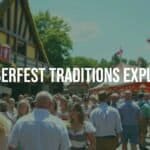
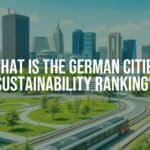
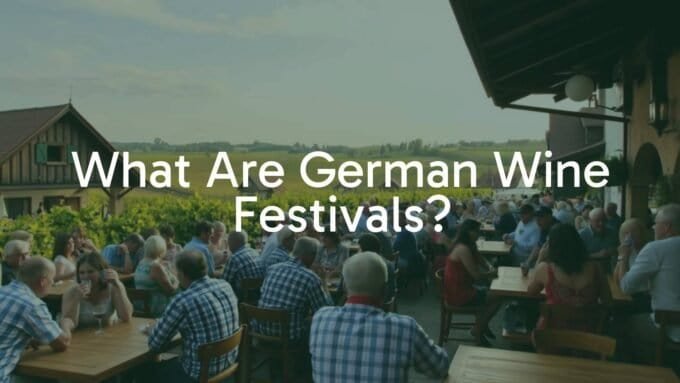
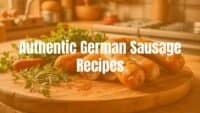
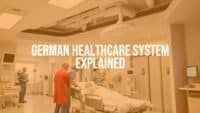
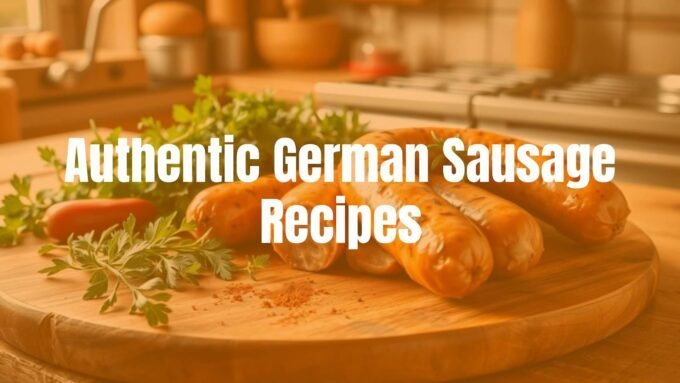
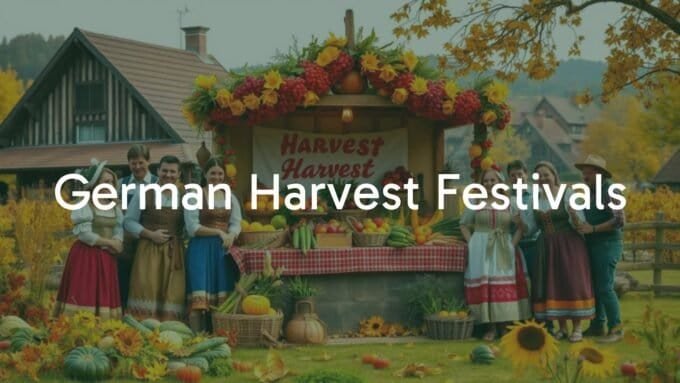



Leave a comment